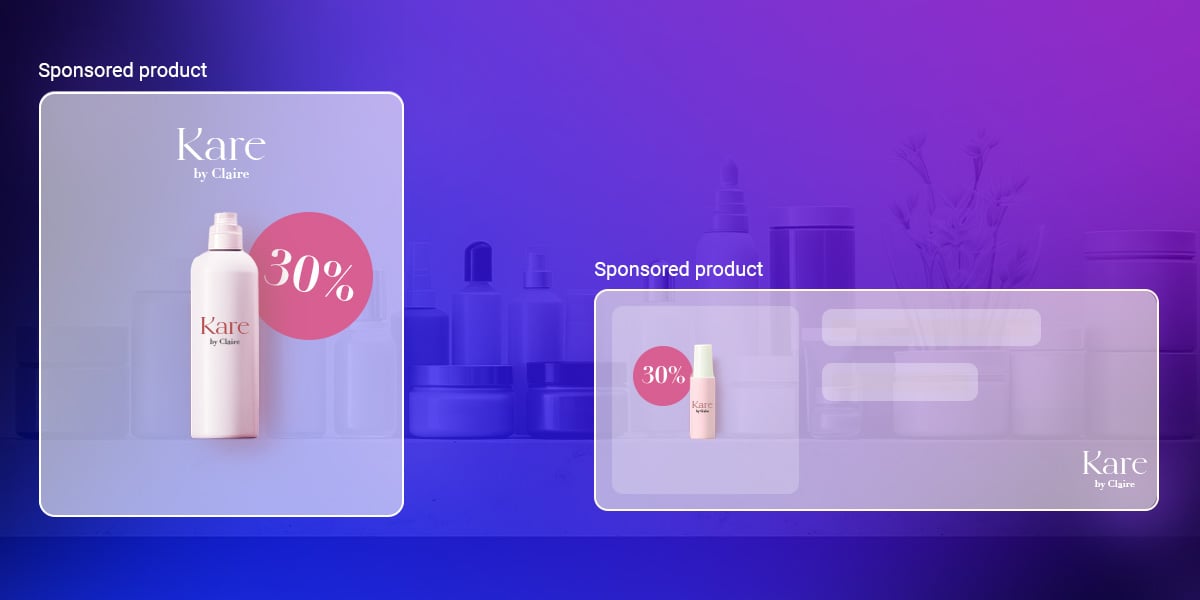Being on the pulse of online advertising trends could be crucial as we move into 2023, recent findings have suggested. According to Statista, worldwide digital e-commerce sales increased to 5.2 trillion U.S. dollars during last year. Growth is forecasted to rise up to 56 percent during 2023, which will be 8.1 trillion dollars in 2026.
It also found revenue in the e-commerce space alone is predicted to reach £89,591 million by the end of 2021 and hit heights of £104,043 million by 2025.
The Global Internet Advertising Market Report, from Research and Markets, adds that internet advertising will increase at a CAGR of 24.7% between 2020 and 2027. Indeed , it’s a fascinating time to be working in online advertising – and with knowledge of the latest trends, your brand can steal a march on the competition for 2023 and beyond.
In this guide, we look at the biggest and best online advertising trends the new year has to offer to help your creative team kickstart 2023’s ROI success story.
The biggest online advertising trends for 2023:
- Cookie alternatives – will a winner emerge?
– Moving forwards without cookies - Onsite advertising and dynamic ‘content’ optimisation
– Bringing together onsite advertising and DCO - Expansion of gaming platforms as advertising channels
– Where are the opportunities within gaming advertising? - Amazon and retail marketing – the continued growth
1. Cookie alternatives – will a winner emerge?
Google’s upcoming plans to eradicate third-party cookies have the online advertising industry in flux. Third-party cookies have been integral to many advertising strategies, as more people shop online worldwide and use social media via multiple devices.
Head to Facebook after visiting your favourite brand’s website and you’ll be met with an ad for the product you were just browsing, thanks to cookies.
In fact, 83% of marketers in the US were reliant on third-party cookies as of July 2021, according to Statista. Between 2017 and 2019, $19.7 billion was spent on third-party audience data in the US alone.
2023 will see much change in the way publishers serve content and advertisers target consumers. All of us consume articles and online content for free in exchange for the publisher displaying targeted advertising on their platforms, for instance. But 2023 brings a complicated shake up and, as the year unfurls, it will be a race against time to establish the best way forward for online advertising.
This remains an extremely uncertain space, with ample room for movement. Therefore, remaining aware of latest developments throughout 2023 will be crucial for your team’s success.
Moving forwards without cookies
The online advertising industry is exploring ways to replicate the behaviour of third-party cookies, and many companies are developing alternatives. In the US, spending on identity solutions between 2020-2024 is expected to hit $8.2 billion. Meanwhile, this expenditure is set to reach $4.1 billion in Europe by the same date.
There are hundreds of suggestions in the pipeline! But which will emerge as a leading choice, and will there even be a winner from this?
A Statista survey showed that 60% of US marketers believe multiple solutions will be required. Plus, 62% have developed first-party strategies and 74% are collaborating to share data.
One of the leading solutions in advanced developments is Unified ID 2.0, an open-source system. It will allow users to log in and set their ad preferences, thus creating an ID. Big companies such as BuzzFeed and Newsweek and millions of people are taking part in a trial. Other developing alternatives include netID and Authenticated Identity Infrastructure.
Remember, first-party data is crucial for your brand, and Google will still allow first-party cookie usage for targeted ads online.
Other options for your creative team to research include:
- Targeted social media ads
- Closely look at social insights
- Utilise first-party data from your CMS/website
- Conversion measurement APIs
- Aggregated reporting
- Look into Google’s Privacy Sandbox
- Harness the power of your email marketing data
- Contextual advertising
2. Onsite advertising and dynamic optimisation
In a cookie-less world, a partnership between onsite advertising and dynamic creative optimisation (DCO) could be crucial. E-commerce and retail brands operate in a competitive landscape. So, with third-party cookies unable to entice users to your site, it will be key to capture attention and provide seamless experiences when customers arrive on your site.
Statistics highlighted by Forbes show the importance of customer experience (CX). Your brand relies on customers and customer loyalty. Which helps to explain why spending for global CX is predicted to reach heights of $641 billion during 2022. Additionally, Econsultancy found 95% of large organisations think CX job roles are key for their business growth.
These numbers show the shift towards the focus of site performance for brands as we move into another year.
Onsite advertising and dynamic optimisation could, therefore, be one of the biggest online advertising trends for your brand to tap into in 2023.
Bringing together onsite advertising and DCO
By combining onsite advertising with DCO, your team is empowered to launch data-driven onsite placements with creativity at their core. What this means in practice, is your experts have the capability to use HTML5 ad placements to replace any generic site content – this might be video, copy, or an image.
These HTML5 placements then alter according to who’s viewing them, resulting in pinpoint personalisation and contributing to excellent customer experience.
With such innovation, your brand can personalise onsite messaging for several audiences, whether they’re regular customers or new prospects.
With Creative Personalisation, your marketing team can optimise live dynamic ads without using cookies and in real-time – what’s more you can even use your existing ad tech.
During 2023 and beyond – and as the industry evolves in a landscape free of third-party cookies – personalising your onsite advertising could set your brand apart.
3. Expansion of gaming platforms as advertising channels
With an estimated 3.24 billion global gamers in 2021, it’s no surprise gaming platforms are increasingly popular among advertisers. Earlier this year, we discovered gaming has a turnover of $159 billion, and during 2020 esports alone had a worldwide audience of 495 million.
Gaming has quickly emerged as an integral segment of the entertainment industry, leading the way in turnover. This has translated into the speedy expansion of gaming platforms as advertising platforms.
In fact, research covered by The Drum shows video game advertising has risen by 17% in 2021, while ad spend for console, streaming and distribution is up 36%. When it comes to online advertising trends, this is a big one.
Where are the opportunities within gaming advertising?
There are three main areas for advertisers to target within the gaming industry, they are:
- Around game – banners, videos and pop-ups not included in the gaming experience itself.
- In-game – or IGA, this type of advertising can be static or dynamic, but is part of the gaming experience.
- Advergaming – games specifically designed based on the advertised service or product
The opportunities are wide-ranging within this segment. Your brand can invest in rights for advertising purposes, opt for product placements, invest in branded elements, or create completely branded games.
Read through our essential guide to gaming for digital marketers for an overview of how to incorporate this burgeoning space into your advertising strategy and watch your ROI soar.
4. Amazon and retail marketing – the continued growth
The impact of Covid-19 on traditional shopping experiences has made online retail key. Although online retail numbers are lower than in 2020, IMRG figures from May 2021 show that sales volumes were up 46% from the same period in 2019.
Leading online retail is Amazon. By the end of 2021, Statista projects that Amazon’s market share of the US’s e-commerce retail market GMV will hit 50%. Meanwhile, Edge Retail Insight anticipate the company’s gross sales in the UK will reach £77.1 billion by 2025 – outsprinting Tesco, current market leader, by £1 billion.
There’s huge opportunity for advertisers and brands to build both trust with Amazon customers and brand equity in equal measure. Helping your brand to thrive with ranking and sales uplift through advertising can be crucial. Investing in sponsored ads and looking into Amazon DSP could be an ROI-building aspect of a great online advertising strategy.
A Salesforce study found 60% of customers say they’ll do more online shopping after the pandemic than they did before. There’s so much happening in the online retail marketing and advertising space as we move into 2023, it’s impossible to ignore.
Key takeaways
With cookie alternatives up in the the air, and online advertising is moving into unknown territory, keeping up to date with trends is important.
We predict that in 2023, advertising in gaming will expand even more rapidly and be an exciting and fruitful space to place ad spend. Along with Amazon and retail marketing flourishing, there’s lots for your creative team to work with in 2023.
Not only that, but social commerce is a hotbed for advertising activity. With the option to buy directly on Instagram, plus the presence of native advertising products, your online ad strategy has extensive possibilities for growth.
Want our latest articles to your inbox? Subscribe today!
Harnessing the power of a premium ad creator to automate the production of your creative, fast and at scale, can help you accelerate past the competition. Additionally, with Bannerflow’s campaign management and personalisation tools, it’s simple for your team to control, target and tailor campaigns from a single source. To experience every feature these solutions have to offer, it’s easy to request a demo. One of our experts will help you get started and guide you through the process.








